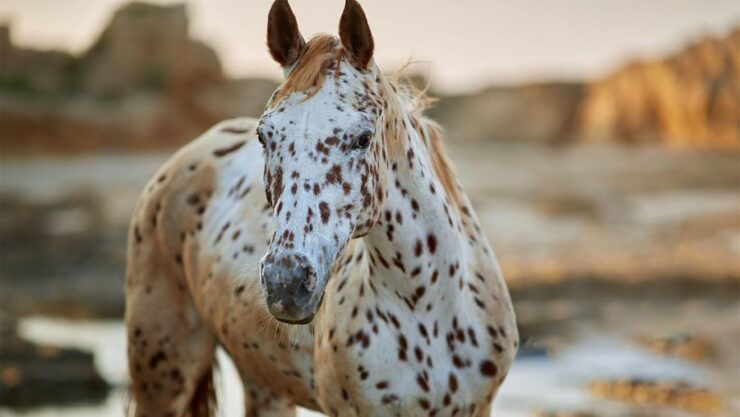Welcome, equine enthusiasts, to a whirlwind tour of the world’s most distinctive spotted horse breeds. Let’s embark on a journey through the awe-inspiring mosaic of nature that weaves itself into the coats of these spectacular creatures. From the United States to India, we’ll explore ten breeds that have captured the hearts of horse lovers everywhere with their striking, dotted patterns.
1. Appaloosa
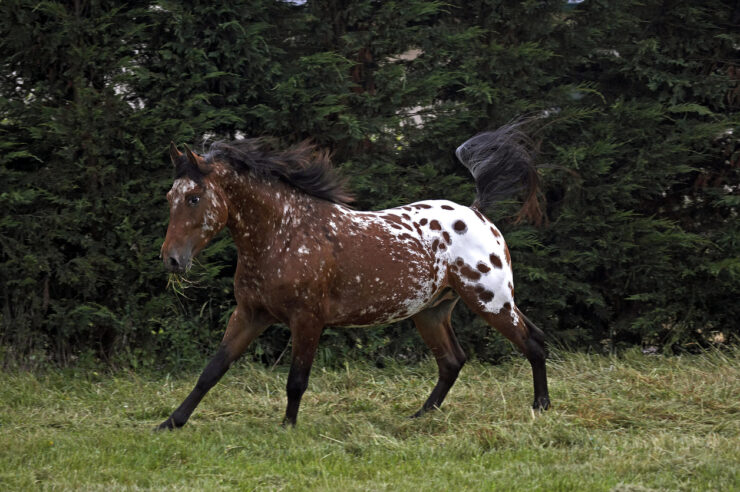
The Appaloosa, a horse breed renowned for its vibrant spotted coats, traces its history back to the Nez Perce Native American tribe of the American Northwest. Captivating in its aesthetics, the Appaloosa often bears a blanket of white over its hips, sprinkled with dark spots. This breed isn’t just a delight to behold; it’s versatile, with a solid build suitable for various riding disciplines, making it a beloved choice for equestrians worldwide.
Taking care of their hair should be done with curry combs so visit this site to get one for your horse. Moving away from aesthetics, the Appaloosa breed also charms with its engaging personality. These equines typically exhibit a calm demeanor and exceptional intelligence, often forming close bonds with their human companions.
2. Knabstrupper
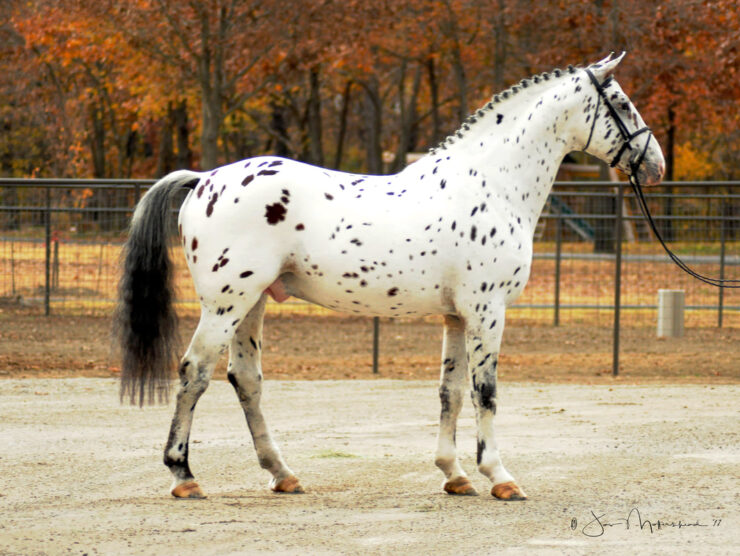
With its origins tracing back to Denmark, the Knabstrupper exhibits a spectacular coat filled with spots, reminiscent of the Appaloosa, yet unique in its own right. These horses often sport what’s known as a leopard-spotted coat – a white base covered with dark, round spots.
This breed’s intriguing look is paired with a robust build and a vivacious spirit, making it a star in the arenas of dressage and show jumping. As we delve deeper into the character of the Knabstrupper, we find it to be a blend of dynamism and amiability. Often friendly and easy to train, these horses are known for their agility and stamina.
3. Pinto Horse

The Pinto Horse, rather than a breed, is a color pattern seen across multiple breeds. Epitomizing the phrase ‘art in motion,’ the Pinto stands out with large, irregular patches of white and another color, usually black or brown.
An embodiment of equine beauty, Pintos are visually stunning, with their coloration adding an extra layer of charm to their physical attributes. When discussing Pinto’s usage, it’s worth noting that the breed does not dictate it. From ranch work to trail riding, from pleasure driving to show events, Pintos are spotted in various roles, depending on their breed.
4. Noriker Horse
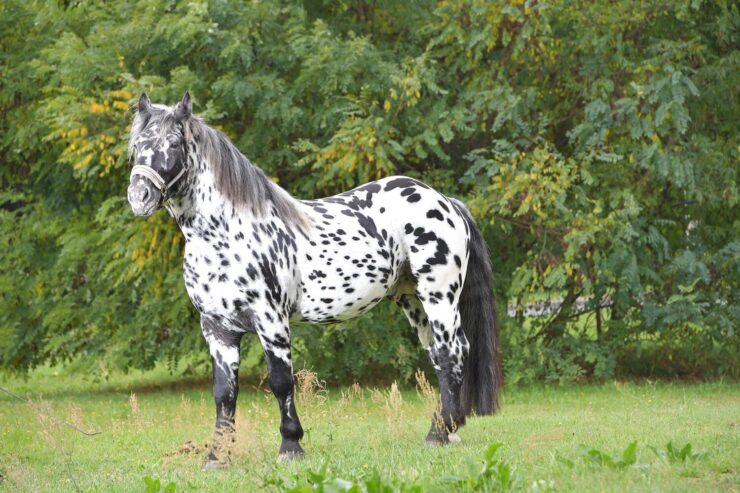
Hailing from the Alpine region of Austria, the Noriker Horse is a striking draft breed known for its muscular physique and spotted coats. Diverse in its coloration, the Noriker may exhibit the ‘leopard’ pattern akin to the Knabstrupper, or ‘tiger’ spots – a beautiful spectrum of dots on a solid coat.
These horses are as sturdy as the mountainous terrains they’re bred to navigate, combining their power with a unique visual appeal. Beyond their striking looks, Norikers impress with their adaptability and resilience. They were originally bred for farm work in challenging terrain and harsh weather conditions, making them robust and hardy.
5. Marwari Horse
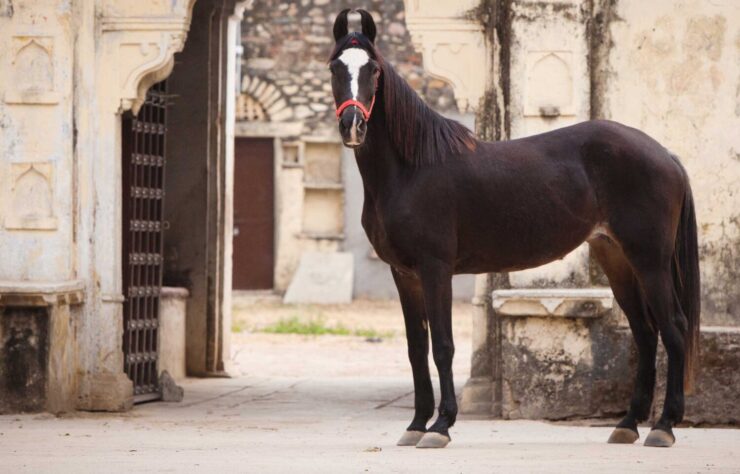
From the deserts of India emerges a horse breed that is as much a cultural icon as it is a visual spectacle. The Marwari Horse, with its signature inward-curving ears, can occasionally flaunt a spotted coat, adding to its enchanting charm.
Although less common than solid colors, the piebald and skewbald Marwari – displaying patches of white and black or brown respectively – capture the eye and heart with their unique appearance.
6. Colorado Ranger Horse
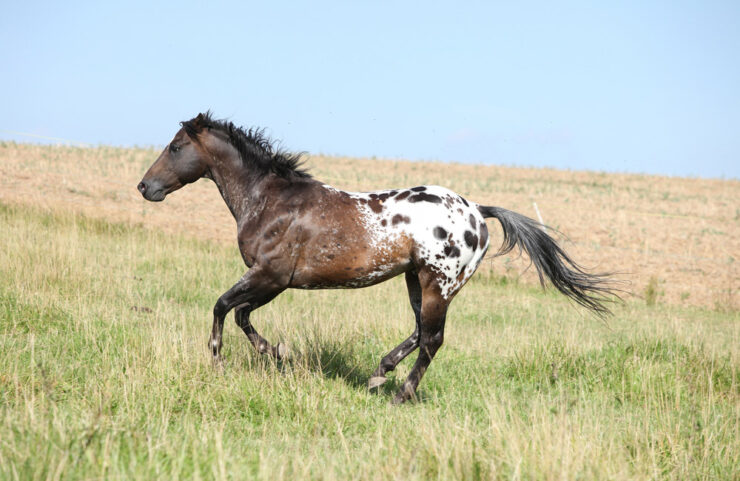
The Colorado Ranger Horse, often spotted with uniquely patterned coats, represents a fascinating chapter in American equine history. This breed showcases a wide variety of colors and patterns, but the most popular feature leopards and blanket patterns, akin to the Appaloosa.
Their uniquely spotted coats are a defining trait, setting them apart in the equine world. The allure of the Colorado Ranger extends beyond its aesthetic qualities. These horses are celebrated for their trainable nature and versatile abilities, proving their mettle in everything from working cattle to participating in equestrian competitions.
7. Leopard Complex Horse Breeds
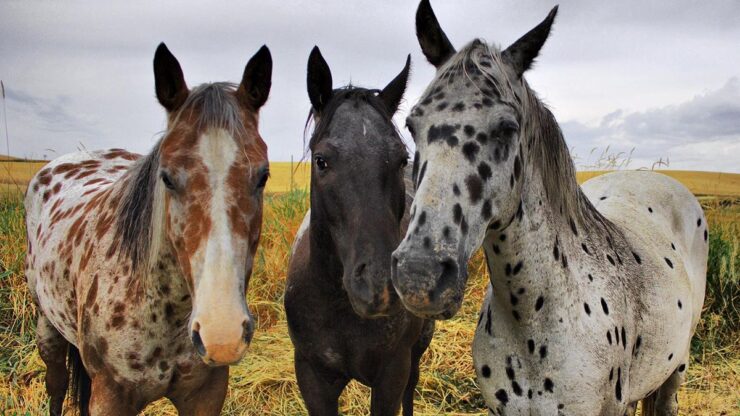
The term ‘Leopard Complex’ refers to a group of horse breeds that display a specific set of spotting patterns. The common denominator for these horses is the leopard pattern, characterized by a white coat densely speckled with dark spots.
This unique coloration has enamored humans for centuries, featuring prominently in prehistoric cave paintings. Despite the focus on their stunning spotted coats, horses from the Leopard Complex are not defined by their looks alone. Known for their agility and endurance, they excel in various fields, from cattle work to equestrian sports.
8. Spotted Saddle Horse
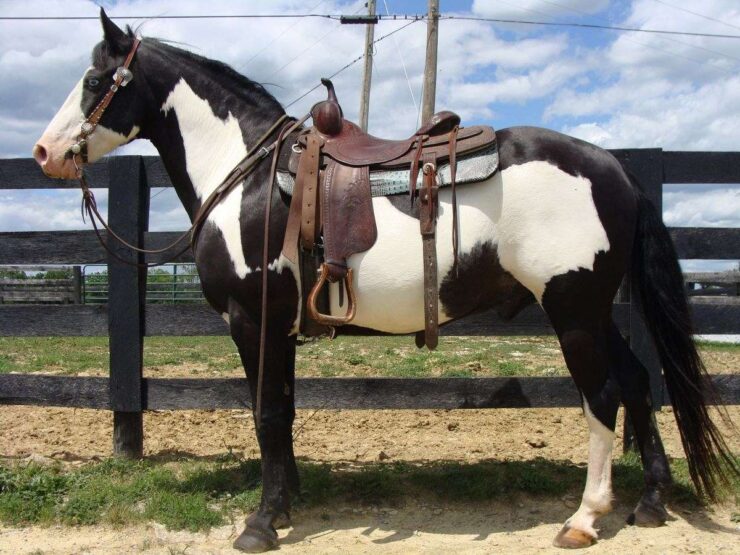
The Spotted Saddle Horse is a breed that combines the grace of a showhorse with the vibrant patterns of a pinto. Known for their smooth gaits and spotted coat patterns, these horses offer a visual spectacle whether they’re in the show ring or out on the trail. Their variety of colors and markings, including the tobiano and overo patterns, have won the hearts of horse enthusiasts globally.
9. American Paint Horse

The American Paint Horse, a breed that blends the conformational characteristics of a western stock horse with a pinto’s unique coloration, is next on our tour. These horses are instantly recognizable, sporting large patches of white mixed with any color in the equine spectrum. This vibrant coloration, coupled with their muscular build, makes them a sight to behold.
10. Pony of the Americas (POA)
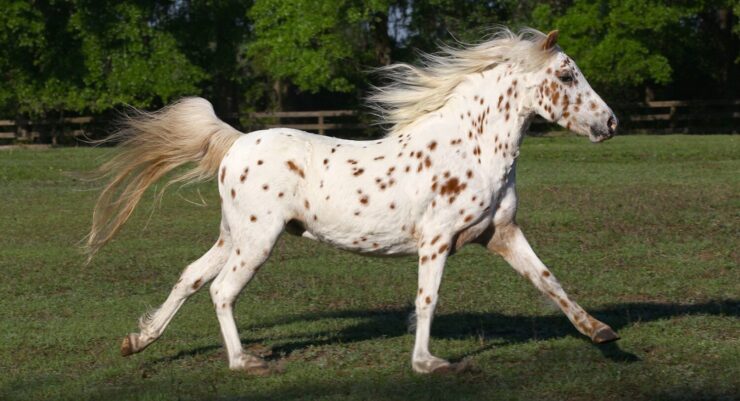
Last but certainly not least, the Pony of the Americas (POA) is a breed designed specifically for younger riders, boasting a spotted coat that is as endearing as its size. Created in the United States, the POA exhibits Appaloosa-like spotting, often on a blanket of white over the hips. This blend of spots and smaller stature makes the POA an appealing option for young equestrians.
Final Thoughts
Our journey across continents and through history, exploring the world of spotted horse breeds, reaches its conclusion here. As we’ve seen, these breeds offer more than just a visually striking presence. They are remarkable creatures that combine unique aesthetics with agility, strength, and resilience. They prove, with their varied abilities and roles, that they’re not just about spots and strides; they are, indeed, a testament to nature’s beautiful variety and the enduring bond between horses and humans.

